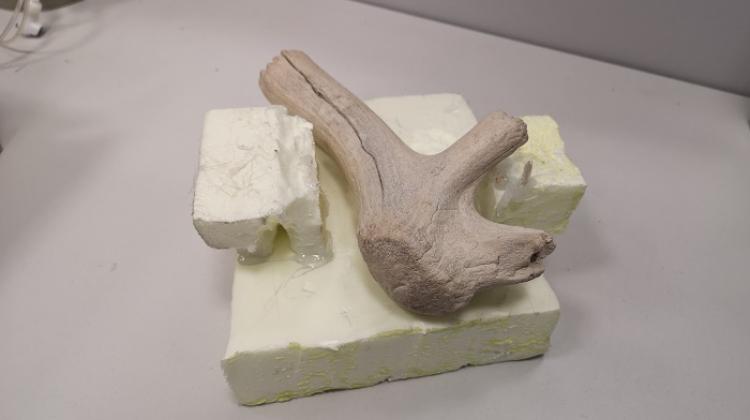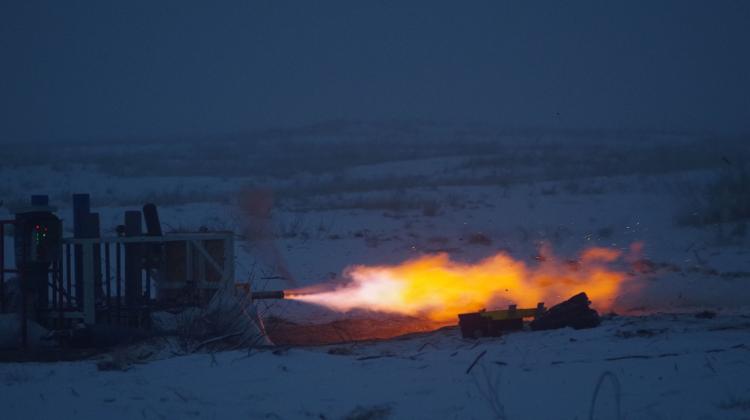Swiss and Polish researchers stop long bridge in Russia from waving
 PAP © 2012 /
PAP © 2012 /
7-km bridge in Volgograd, Russia stopped waving and become stable with a special vibration damper designed by a scientist from the Empa institute in Switzerland, and a researcher from AGH University of Science and Technology in cooperation with German company.
Only two years ago wind was enough to cause strong vibration of the slender bridge in Volgograd. The bridge would start waving, making the drive dangerous. After the peak amplitude reached nearly 0.5 m in May 2010, authorities decided to temporarily close the bridge..
Today the bridge is no longer waving. Special vibration dampers have been installed, making the vibration no longer dangerous. The originators of the innovative concept of dampers are Dr. Felix Weber of Empa institute in Switzerland and Dr. Marcin Maślanka from AGH, and their idea has been realised by the company Maurer Soehne.
12 over 5-ton dynamic adaptive dampers have been placed on the girders of the bridge in Russia. Dr. Maślanka, employee of the Faculty of Mechanical Engineering and Robotics at AGH, explained in an interview with PAP that with used sensors, special magnetorheological fluid, which can change its properties, and microprocessor control system, the damper adjusts to occurring vibrations, allowing to dampen the vibrations so they no longer pose a risk.
Details of the developed solution were published in May in the journal Smart Materials and Structures.
Dr. Maślanka explained that for the reduction of vibration of bridges engineers normally use less complex systems, so-called passive dynamic vibration dampers, also called mass dampers. These dampers require precise tuning to the occurring form of resonant vibrations of the bridge with a predetermined frequency. However, the bridge in Volgograd had three forms of resonance vibrations that required damping.
To suppress several different forms of bridge vibration, engineers use a larger number of suitably placed and tuned dampers, and each damper tuned to the desired frequency of vibration may be completely ineffective in suppressing the vibration of different frequency.
In addition, the frequencies of these vibrations change, for example depending on temperature, because the hardness of the structure changes. Passive vibration dampers could prove ineffective in this case.
New generation dampers, so-called adaptive dynamic vibration absorbers, are not an idea of the Swiss and the Pole. The researcher from AGH noted that such adaptive devices had already been available on the market. By 2009, these solutions were used in about 50 high buildings in Japan, which had to be resistant to earthquakes. Dr. Maślanka explained that these systems are expensive because of the use of hydraulic power packs.
The distinctive feature of the devices used on the bridge in Volgograd is the use of magnetorheological fluid. This fluid is composed of ferromagnetic particles suspended in a liquid carrier. Under the influence of external magnetic field, the liquid rapidly changes its properties and in extreme cases it can behave like a solid. Required magnetic field is produced by magnetic coil and the field strength depends on the coil current.
The magnetorheological fluid system is controlled by changing the coil current, whose value is automatically calculated by the microprocessor system based on current measurements of the bridge vibrations. This solution, and the control algorithm developed by researchers, allows to precisely tune the operation of adaptive dynamic dampers and effectively suppress vibrations of the bridge. The energy needed to power and control these systems is incomparably lower than the energy required to power the hydraulic components.
Vibration dampers developed by the researchers from Switzerland and Poland can be used not only in the construction of bridges, but also footbridges, tall buildings and masts.
Dr Maślanka added that the wind is the main cause of strong vibrations of bridge and footbridge structures, but vehicle traffic or pedestrians may also cause minor vibrations. Tall buildings can vibrate due to the wind, or, like in Japan, as a result of the earthquake. The researcher also drew attention to vibrations which may be caused by crowds at sports stadiums during musical concerts. The audience jumping to the music can cause vibrations dangerous for structures.
(Article about using magnetorheological fluid in bulletproof vests can be found here).
PAP - Science and Scholarship in Poland, Ludwika Tomala
agt/ mrt/
tr. RL
Przed dodaniem komentarza prosimy o zapoznanie z Regulaminem forum serwisu Nauka w Polsce.


















